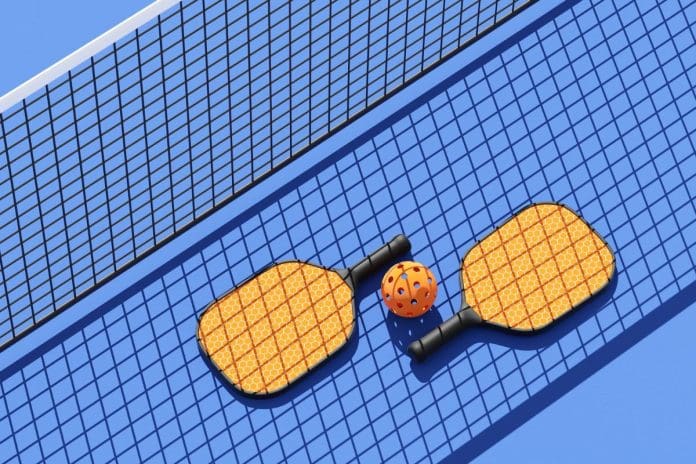Out Ball Calls in Pickleball: In pickleball, accurately determining whether a ball is out is crucial for ensuring fair play, especially in matches without official referees. With this in mind, players must rely on their judgment to make precise calls. Here’s an in-depth look at the definition of an out ball and best practices for making these calls.
Definition of an Out Ball in Pickleball
According to the USA Pickleball rulebook, the definition of an out ball is as follows:
“A ball contacting the playing surface completely outside of the court is ‘out’. A served ball that lands in the opponent’s non-volley zone, including the NVZ lines, is ‘out’.”
This definition clarifies that any ball landing outside the designated playing area or within the non-volley zone lines is deemed out. The rulebook also emphasizes that in cases of doubt, players should give the benefit of the doubt to their opponents.
“Players shall not call a ball ‘out’ unless they can clearly see a space between the line and the ball as it hits the ground.” This guideline ensures that players make accurate calls based on visible evidence rather than assumptions.
Evaluating Close Calls in Pickleball
A frequent situation in pickleball involves balls landing near the lines. To handle these close calls effectively:
- View from Different Angles: The SuperDUPR Pickleball video shows how viewing angles can influence the perception of whether a ball is in or out. This visual aid helps players understand how perspective can impact their call.
- Space Between Ball and Line: Players should base their calls on whether they can see space between the ball and the line. If the ball is too close to the line for a definitive call, it’s better to err on the side of caution.
Timing of the Call
Proper timing is essential when making an outcall:
- Call Timing: All ‘out’ calls must be made before the ball is hit by the opponent or before the ball becomes dead. It is important to wait until the ball bounces to avoid premature calls. Ensuring timely calls helps prevent disputes and maintains clarity in the game.
Effective Communication in Pickleball
Clear communication is critical in pickleball:
- Voice and Hand Signals: Players should use their voices loudly and firmly to announce an ‘out’ call. Accompanying the verbal call with a hand signal, if possible, reinforces the decision and helps minimize misunderstandings.
- In Doubt, Call It In: When uncertain about a call, it is advisable to call the ball in rather than out. This approach promotes good sportsmanship and creates a more positive playing environment.
News in Brief: Out Ball Calls in Pickleball
In pickleball, an out ball is defined as one that lands completely outside the court or within the non-volley zone lines. Players should only call a ball out if they can see space between the ball and the line. Calls must be made before the ball is hit by the opponent or becomes dead.
Effective communication involves loud and firm verbal calls along with hand signals, if possible. When in doubt, players are encouraged to call the ball in to foster fair play and a positive game atmosphere.
ALSO READ: Tampa Bay Pickleball Expansion: Exciting Family-Backed Growth

